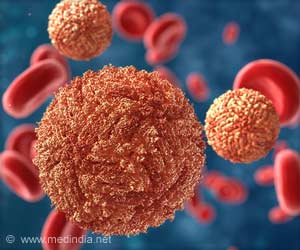
‘It is imperative to report the findings of regular histopathology for a better perception of the mechanism by which the SARS-CoV-2 causes lung injury in the unfortunate tens and thousands of patients in Wuhan and worldwide.’
Tweet it Now
"This would be the only description of early phase pathology of the disease due to this rare coincidence. There would be no other circumstance that this will happen. Autopsies will only show late or end-stage changes of the disease."The article describes two patients who recently underwent lung lobectomies for adenocarcinoma and were retrospectively found to have had COVID-19 at the time of surgery. Pathologic examinations revealed that, apart from the tumors, the lungs of both patients exhibited edema, proteinaceous exudate, focal reactive hyperplasia of pneumocytes with patchy inflammatory cellular infiltration, and multinucleated giant cells. Fibroblastic plugs were noted in airspaces.
"Since both patients did not exhibit symptoms of pneumonia at the time of surgery, these changes likely represent an early phase of the lung pathology of COVID-19 pneumonia," Dr. Xiao said.
CASE 1 was a female patient of 84 years of age who was admitted for treatment evaluation of a tumor measuring 1.5 centimeters in the right middle lobe of the lung. The tumor was discovered on a chest CT scan at an outside hospital. She had a past medical history of hypertension for 30 years, as well as type 2 diabetes. Despite comprehensive treatment, assisted oxygenation, and other supportive care, the patient's condition deteriorated, and she died. Subsequent clinical information confirmed that she was exposed to another patient in the same room who was subsequently found to be infected with the 2019 novel coronavirus.
CASE 2 was a male patient of 73 years of age, who presented for elective surgery for lung cancer, in the form of a small in the right lower lobe of the lung. He had a past medical history of hypertension for 20 years, which had been adequately managed. Nine days after lung surgery, he developed a fever with a dry cough, chest tightness, and muscle pain. A nucleic acid test for SARS-CoV-2 came back as positive. He gradually recovered and was discharged after twenty days of treatment in the infectious disease unit.
Advertisement
Dr. Xiao said. Further studies by Dr. Xiao's team and collaborators on COVID-19 pathology through postmortem biopsies are ongoing, which should provide data on the late changes of this disease.
Advertisement














